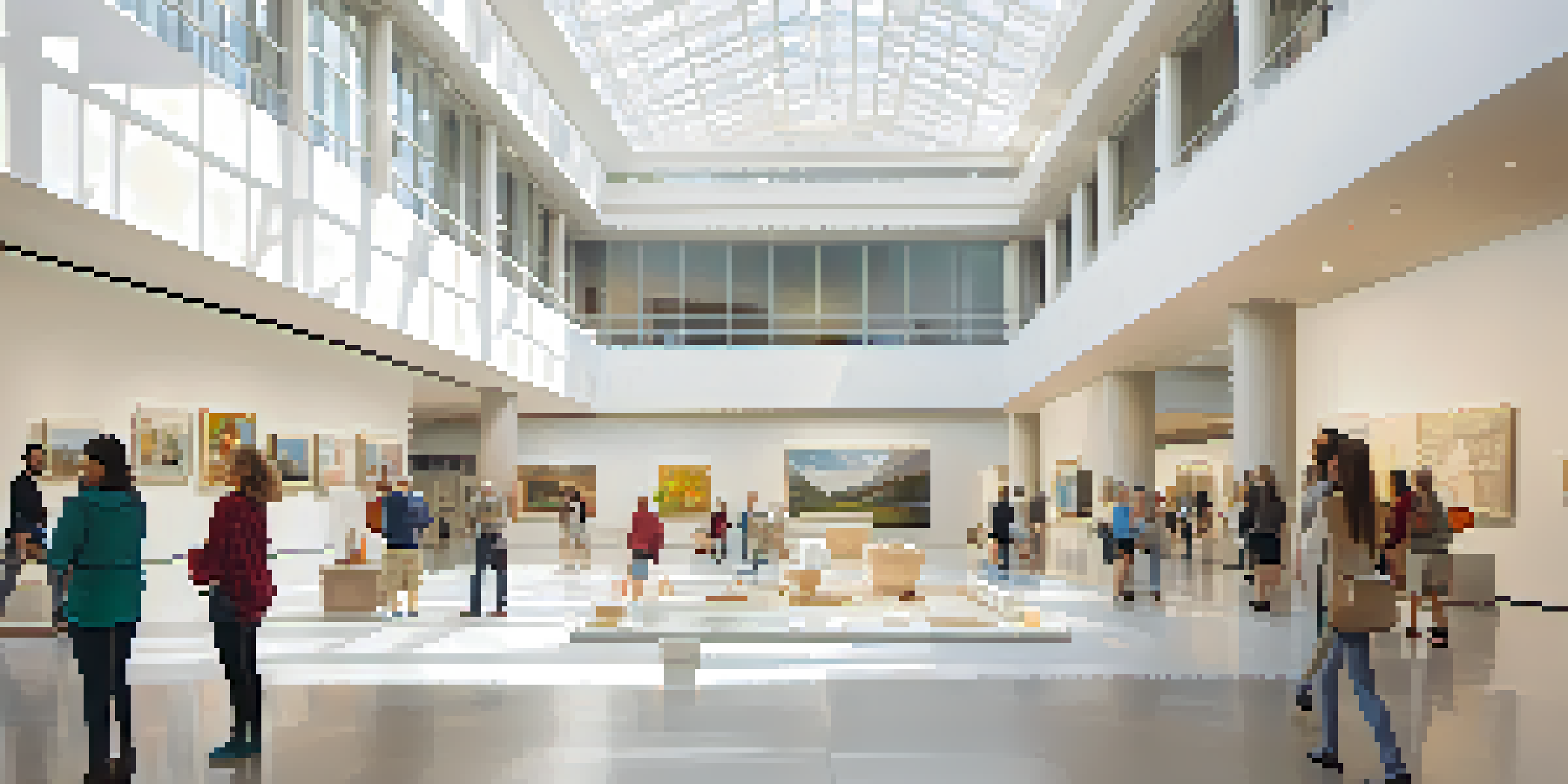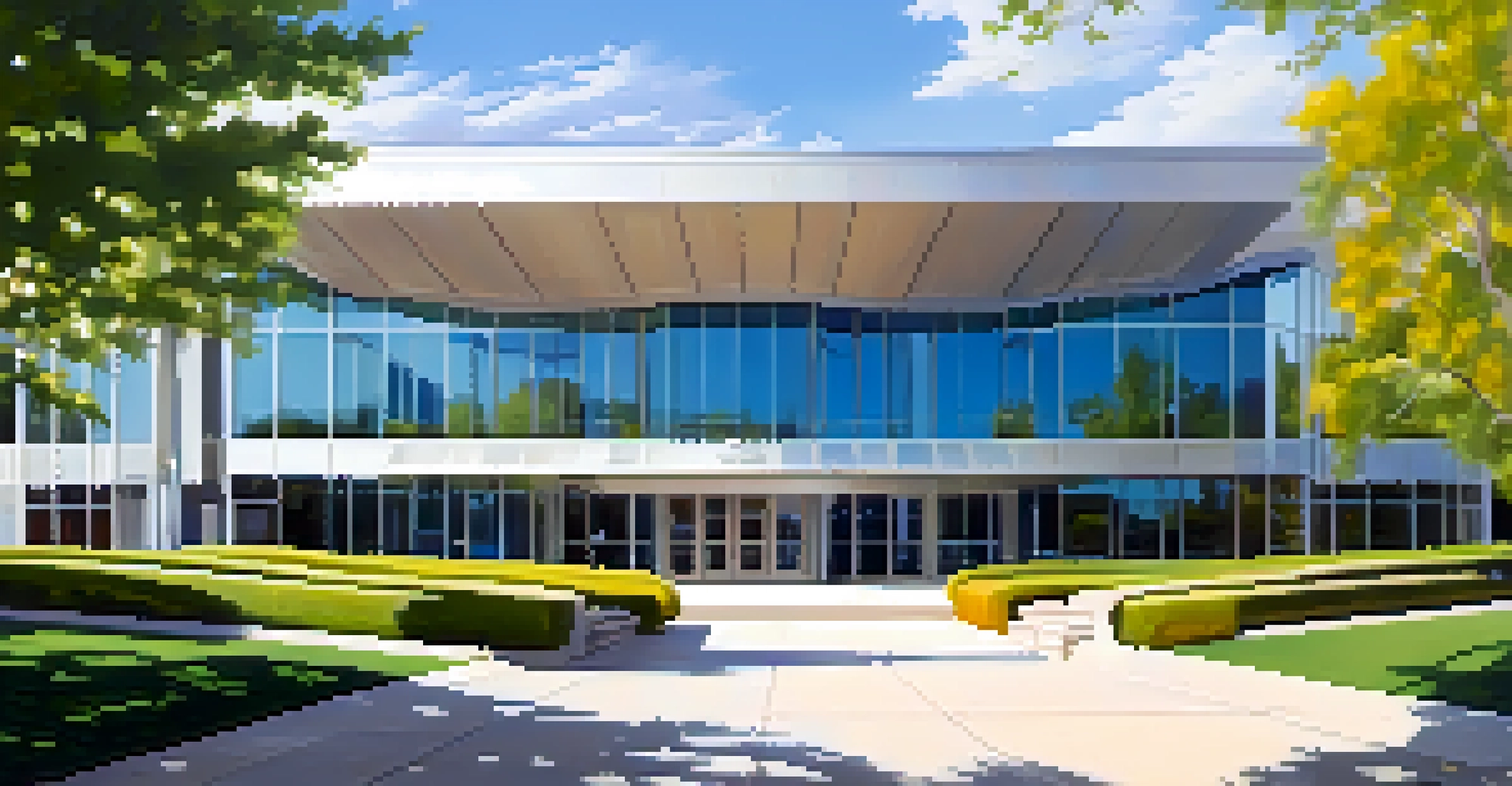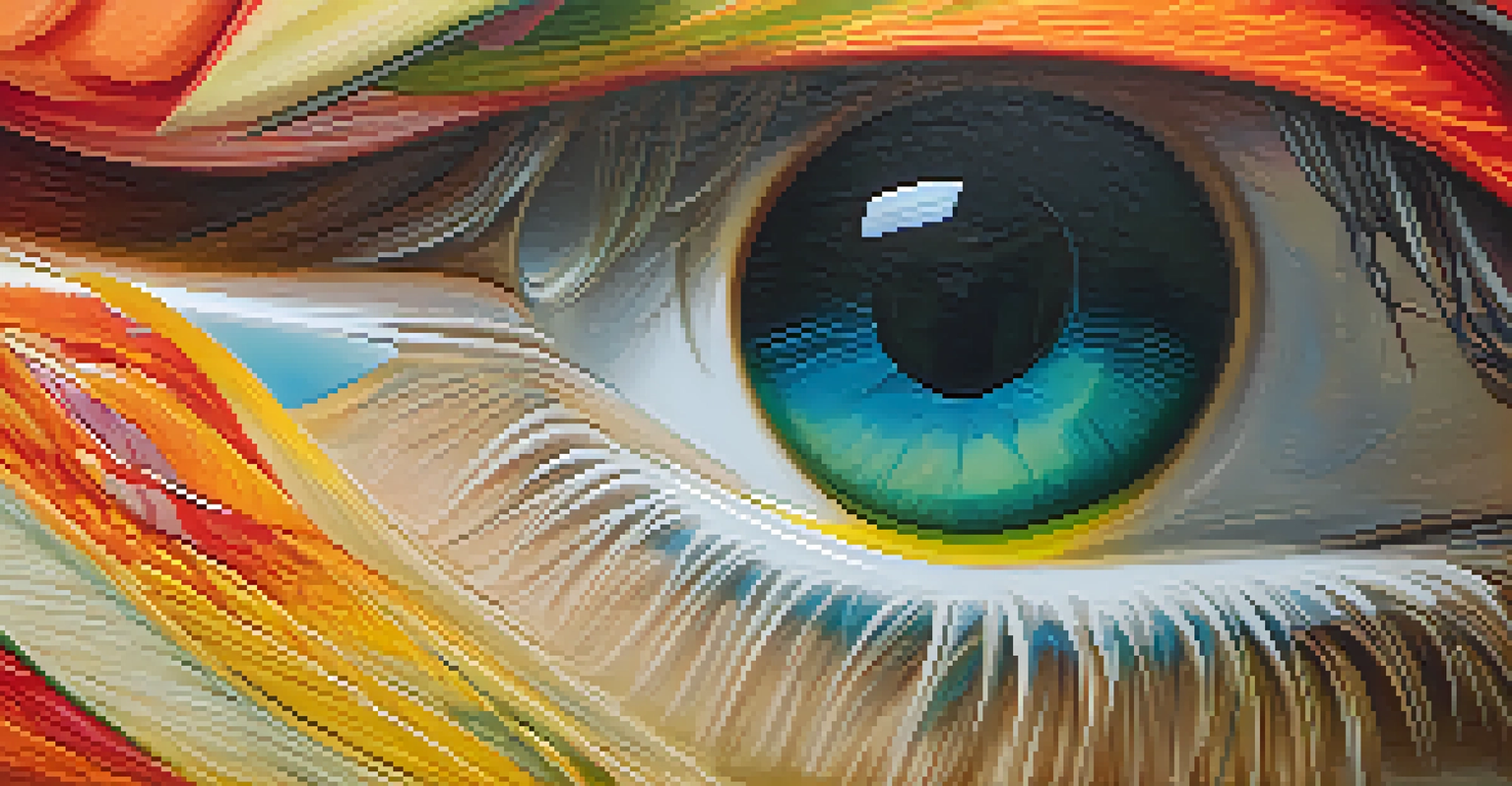Brigham Young University Museum of Art: A Cultural Insight

A Brief History of the BYU Museum of Art
The Brigham Young University Museum of Art, established in 1993, has a rich history rooted in the desire to promote art and culture within the community. Originally part of a broader vision to enhance the university's cultural offerings, the museum has grown to house an extensive collection. Its mission is not only to provide access to art but also to foster an appreciation for diverse artistic expressions.
Art enables us to find ourselves and lose ourselves at the same time.
Over the years, the museum has expanded its facilities and collections significantly, becoming one of the largest art museums in the Intermountain West. It showcases a variety of art forms, including paintings, sculptures, and contemporary installations. This evolution reflects a commitment to both preserving art history and engaging with modern artistic movements.
The museum's establishment marked a pivotal moment for BYU, allowing students, faculty, and the wider community to engage with art in a meaningful way. From its inception, it aimed to be a space for both education and inspiration, making art accessible to everyone who walks through its doors.
Diverse Collections: A Treasure Trove of Art
The BYU Museum of Art features an impressive array of collections that span various periods and styles. Notably, its American art collection includes pieces from the 18th century to contemporary works, showcasing the evolution of American artistic expression. This diversity allows visitors to explore different cultural narratives and artistic techniques.

In addition to American art, the museum houses significant collections of European paintings, including works from the Renaissance and Baroque periods. These pieces provide a glimpse into the rich artistic traditions that have shaped the history of art. The juxtaposition of various styles within the museum creates a dialogue between different cultures and eras.
Rich Collections Reflect Artistic Diversity
The BYU Museum of Art showcases a wide range of collections, from American art to European masterpieces, promoting a dialogue between various cultures and artistic movements.
The museum also emphasizes contemporary art, featuring rotating exhibitions that highlight emerging artists and innovative practices. This focus on the current art scene ensures that visitors always have something new and exciting to experience, making each visit unique and engaging.
Educational Programs and Community Engagement
Education is a cornerstone of the BYU Museum of Art's mission, with a variety of programs designed for all ages. From guided tours and lectures to hands-on workshops, the museum strives to make art education accessible and enjoyable. These initiatives not only enrich the visitor experience but also foster a deeper understanding of the artworks on display.
The arts are not a luxury; they are a necessity.
The museum often collaborates with local schools and organizations to bring art into the community. This outreach allows students and families to engage with art in meaningful ways, encouraging creativity and critical thinking. Programs tailored for children help cultivate a love for art from a young age, ensuring that future generations appreciate its value.
Additionally, the museum hosts special events that celebrate culture and creativity, such as art fairs and guest artist talks. These events create an inviting atmosphere that encourages dialogue between artists and the community, further solidifying the museum's role as a cultural hub.
Notable Exhibitions and Acquisitions
The BYU Museum of Art is known for hosting notable exhibitions that draw attention from both local and national audiences. These exhibitions often feature rare collections, allowing visitors to experience art that may not be accessible elsewhere. By bringing in high-profile shows, the museum elevates its status as a key player in the art world.
One of the highlights in recent years was an exhibition focusing on the works of a renowned contemporary artist, which attracted significant media coverage and public interest. Such exhibitions not only showcase exceptional talent but also stimulate discussions around current artistic trends and social issues. They provide a platform for artists to share their perspectives and engage with audiences.
Community Engagement Through Education
The museum emphasizes education with programs for all ages, collaborating with local schools and hosting events that inspire creativity and critical thinking.
The museum's commitment to acquiring significant works also enhances its permanent collection. Through strategic acquisitions, it aims to represent a wide range of artistic voices, ensuring that the collection remains relevant and reflective of ongoing dialogues in the art community.
Architectural Significance of the Museum Building
The architecture of the BYU Museum of Art is as striking as the art it houses. Designed by architect Michael McCoy, the building features a modern aesthetic that complements the surrounding landscape. Its design incorporates natural light and open spaces, creating an inviting atmosphere for visitors.
One of the most notable features is the grand atrium, which serves as a central gathering space for events and exhibitions. This area not only enhances the museum's visual appeal but also encourages social interaction among visitors. The thoughtful layout ensures that each artwork is showcased in a way that invites contemplation and appreciation.
The building itself has become an iconic symbol of the university's commitment to the arts. Its architectural significance adds another layer of value to the museum experience, as visitors can appreciate both the art and the environment in which it is displayed.
Visitor Experience: What to Expect
Visiting the BYU Museum of Art promises an enriching experience for art lovers and casual visitors alike. Upon entering, guests are greeted by a friendly staff ready to assist with any inquiries. The welcoming atmosphere sets the tone for an enjoyable exploration of the museum's diverse collections.
The layout of the museum encourages a fluid flow from one gallery to the next, allowing visitors to immerse themselves in various artistic styles and themes. Informative signage and multimedia guides enhance understanding, making the experience both educational and engaging. It's a place where curiosity can thrive.
Innovative Exhibitions Enhance Impact
Notable exhibitions and strategic acquisitions keep the museum's collection vibrant and relevant, encouraging discussions on contemporary issues and artistic trends.
Moreover, the museum often features interactive installations that invite participation, creating a dynamic environment. Whether you're an art aficionado or a newcomer, the BYU Museum of Art offers something for everyone, ensuring that each visit is memorable.
Future Visions: The Museum's Ongoing Impact
As the BYU Museum of Art looks to the future, its commitment to innovation and community engagement remains strong. Plans for upcoming exhibitions and programs aim to reflect contemporary issues and diverse perspectives, ensuring relevance in an ever-changing world. The museum strives to be a space where art meets life, inspiring visitors to think critically about the world around them.
The museum's leadership is also focused on expanding its outreach efforts, with initiatives designed to connect with a broader audience. By fostering partnerships with local artists, schools, and cultural organizations, the museum aims to create a vibrant artistic ecosystem that benefits the entire community. This approach not only enhances its cultural significance but also strengthens community ties.

Ultimately, the BYU Museum of Art continues to evolve as a vital resource for education, inspiration, and cultural dialogue. Its ongoing impact is a testament to the power of art in shaping society and fostering understanding among diverse groups.